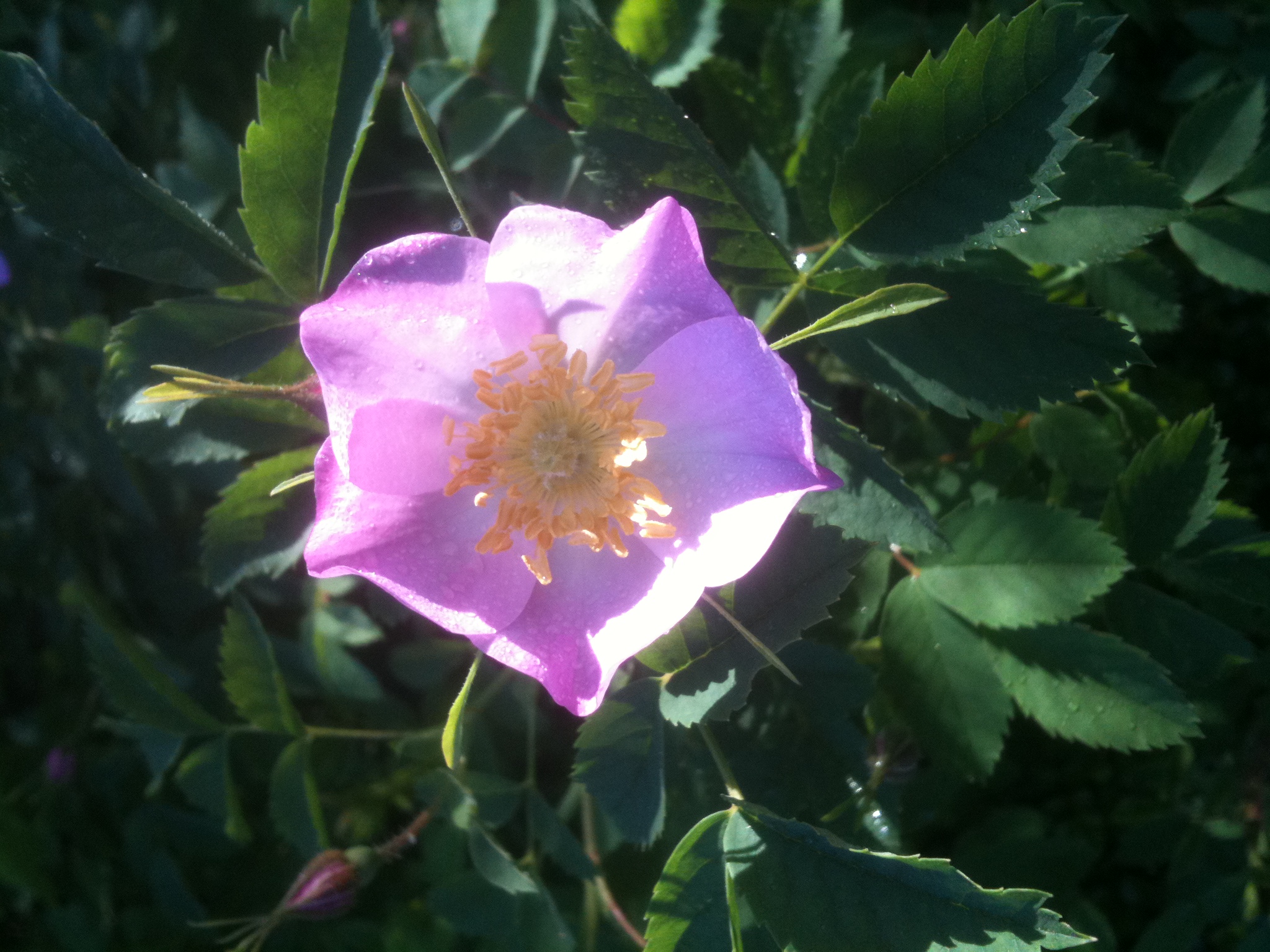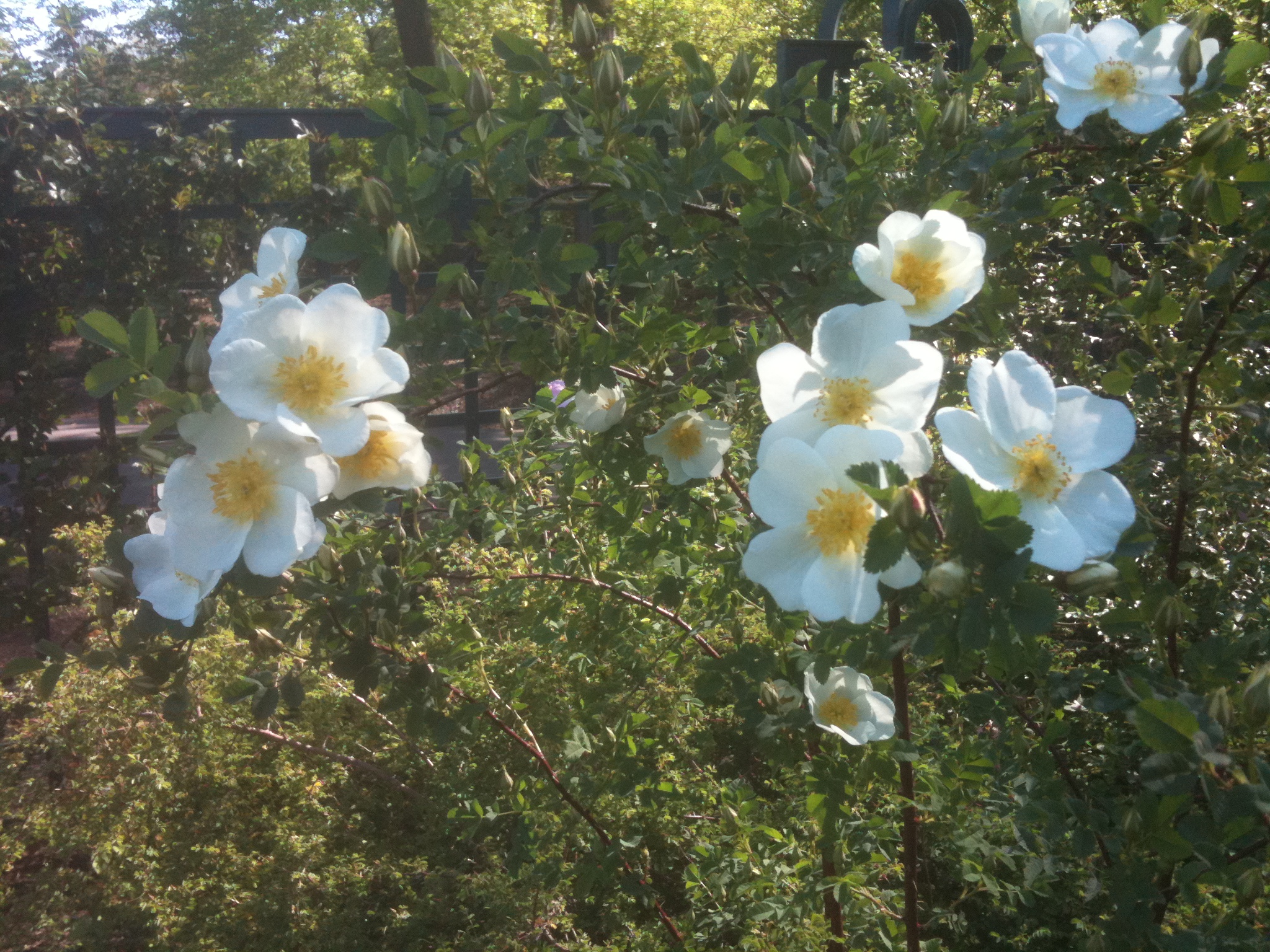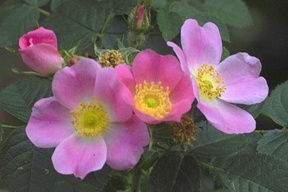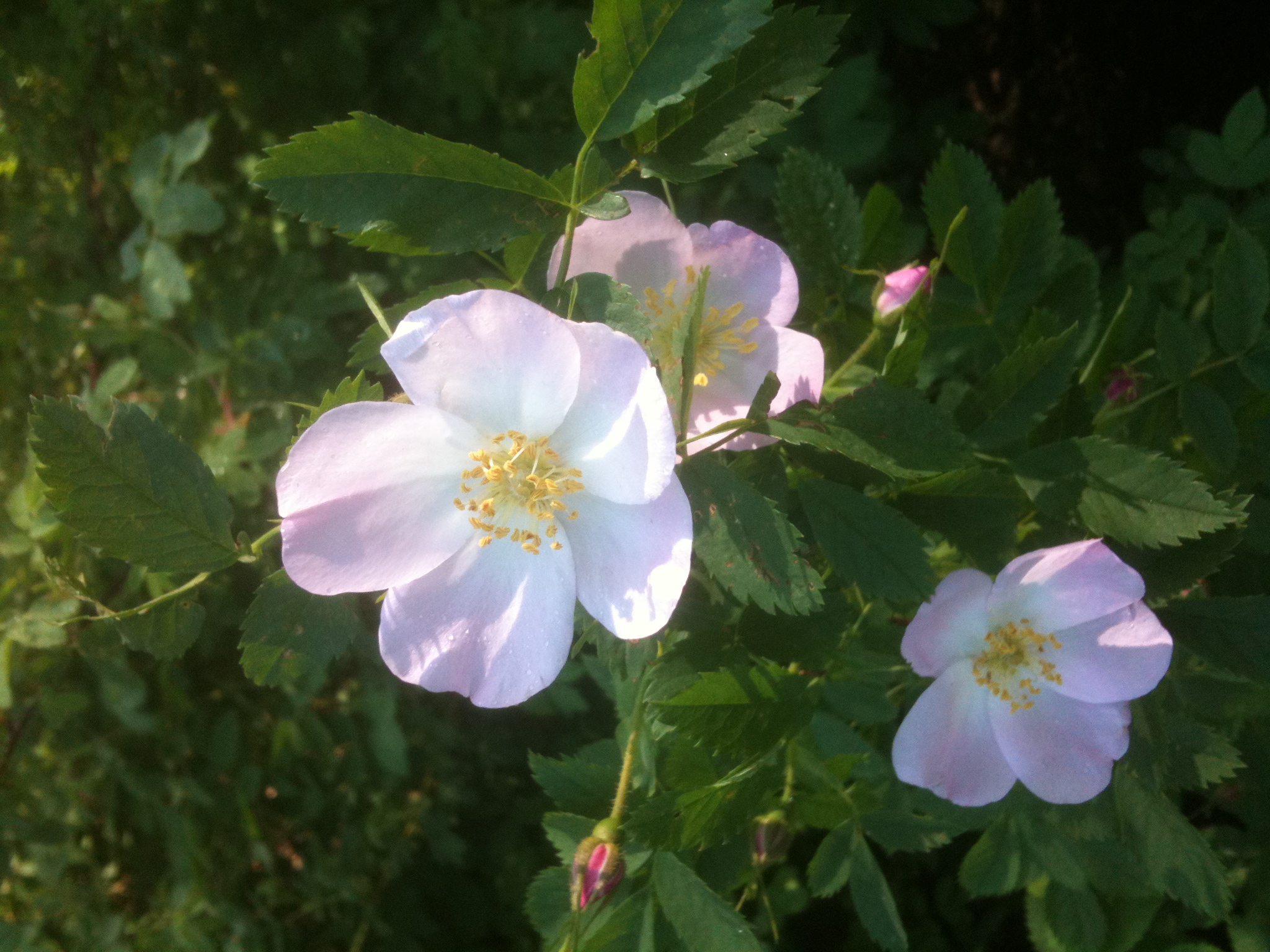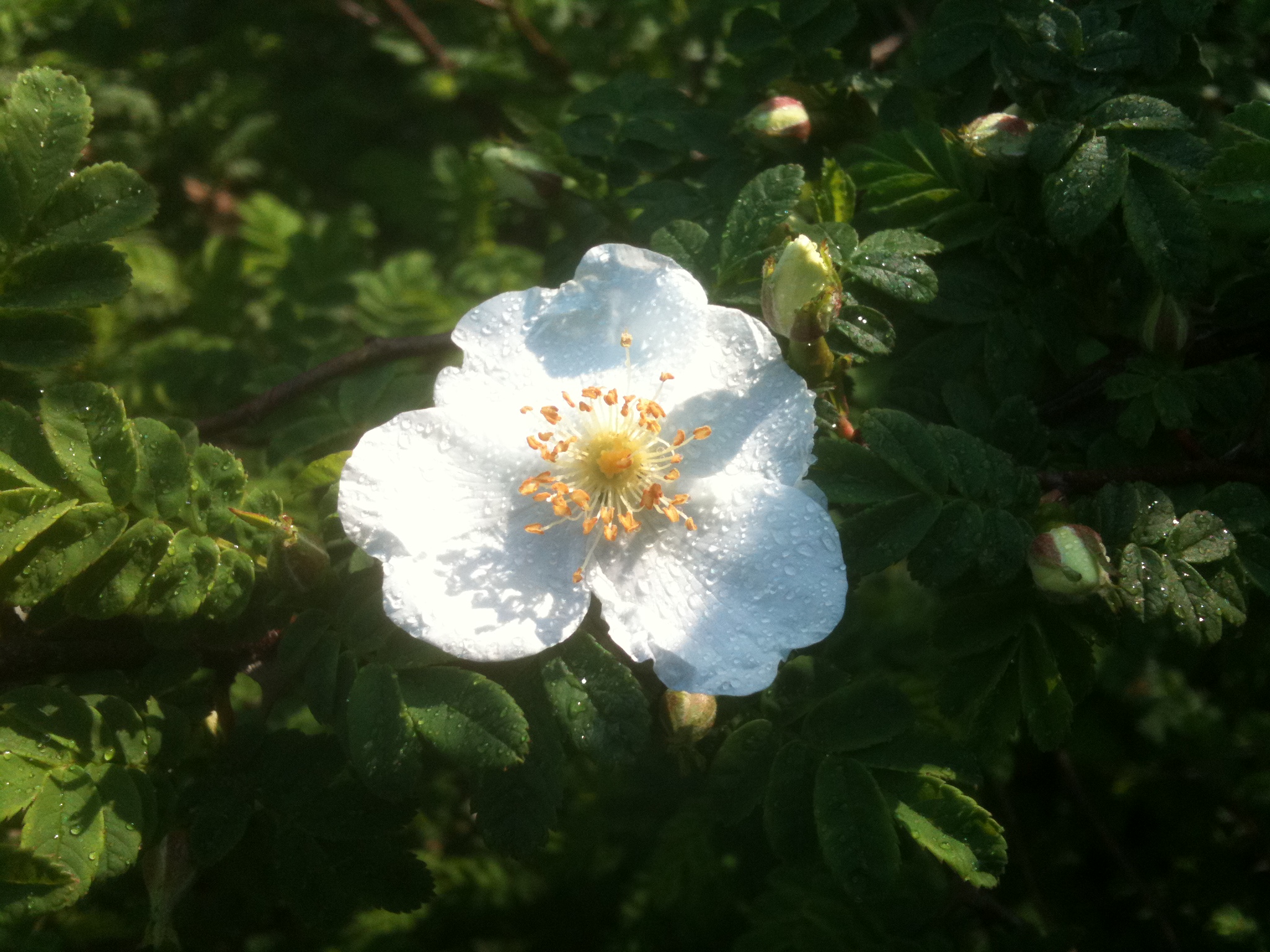The Rose Garden Blooms Again
Posted in Around the Garden on May 9 2011, by Peter Kukielski
Ed. note: The Peggy Rockefeller Rose Garden is swinging back into life! Here’s a quick look at some of the year’s first blooms from Peter Kukielski, the Rose Garden’s curator.
As expected, the early species roses have begun blooming. These are quick to come into bloom and are only around for a couple of weeks.
R. Virginiana (native)
A handsomely foliated plant which shares much in common with other North American species; densely suckering, tall canes with abundant foliage, somewhat smooth, small but charming pink flowers with soft-yellow stamens and a fine crop of round red hips. Tops on Rosa virginiana‘s list of attributes though should be its fall foliage which runs the full spectrum from gold and yellow to amber, rose and crimson.
R. spinossissima var. ‘Altaica’
A larger-flowered clone selection of the well-known and much-loved wild Scots Briar. Its rich, creamy, almost yellow flowers are well scented, and are borne on a tall and spreading plant.
R. eglanteria
A lovely, deep pink form of the Eglantine, with its fragrant and handsome foliage, large and arching and very productive of small, round, scarlet hips. The Eglantine has naturalized in North America, where it is found far and wide. Britton and Brown documented it in Virginia and Tennessee as R. rubiginosa.
R. blanda (native)
Wide, crepey petals of lightest rose-pink with pale-buff stamens and a pungent-sweet scent. A native of the Northeast of North America R. blanda is nearly thornless with soft green foliage. Sets a crop of small, round red fruit. Synonym: Hudson’s Bay Rose, Labrador Rose.
R. sericea pteracantha
Noted for its four-petaled white flowers, but more particularly for the elongated red thorns that stud its canes, R. sericea pteracantha makes a stunning focus in a mixed planting. Tall and arching, and perhaps most effective if older canes are removed annually to make way for new ones, whose thorns are yet translucent and red.

